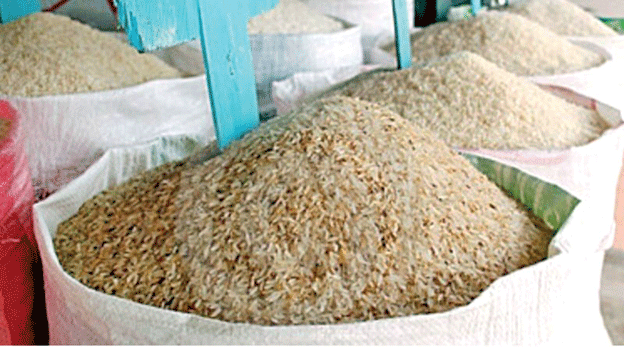Rice is a staple food in Sri Lanka, deeply intertwined with the country’s culture, economy, and politics. The rising cost of rice, along with fluctuations in availability, presents a persistent challenge, sparking debates and demands for solutions. As one of the most consumed items in Sri Lanka, rice prices significantly impact the population’s quality of life and the nation’s economic stability.
Current Status and Challenges
According to the latest crop forecast by the Department of Agriculture (September 2024), Sri Lanka’s paddy production from the Maha 2023/2024 and Yala 2024 seasons is projected to yield 4.24 million metric tonnes (Mt) of paddy. This translates into an estimated rice availability of 2.88 million Mt after accounting for milling losses and moisture reductions, sufficient to meet the annual rice demand of 2.46 million Mt. Despite the apparent surplus of 422,260 Mt, discrepancies in the milling outturn estimates and unrecorded usage for industrial purposes, such as animal feed and beer production, complicate the picture.
The Institute of Postharvest Technology and Management (IPHTM) points out that the actual milling outturn often ranges between 62-65%, lower than the Department of Agriculture’s standard of 68%. Small and medium millers, who make up a significant portion of the industry, report even lower efficiencies, around 52-63%. This overestimation of milling efficiency by the Department inflates rice availability figures, potentially misleading policy decisions.
The Role of Stakeholders
President Ranil Wickremesinghe has engaged with various stakeholders, including government officials, large-scale and small-scale millers, to address the rice pricing issue. However, experts argue that separate meetings only highlight isolated problems. A more integrated approach is necessary, involving all stakeholders in a single forum. Regular discussions at the beginning and end of each paddy season could facilitate better decision-making, ensuring fair prices while maintaining profitability for all players in the rice supply chain.
Calculating a fair price for rice involves assessing production costs, milling expenses, and the profit margins of intermediaries. Currently, parboiled rice is priced at twice the cost of raw paddy, with millers, wholesalers, and retailers adding modest profit margins (Rs. 3, Rs. 1, and Rs. 2 per kg, respectively). However, rising costs of transportation, electricity, and labor require regular reviews of these control prices to reflect economic realities.
Storage and Market Dynamics
Storage plays a crucial role in stabilizing rice supply and prices. The Paddy Marketing Board (PMB) aims to purchase 300,000 Mt of paddy from the Maha 2024/2025 season to buffer against price fluctuations. Yet, previous efforts were hampered by farmers’ reluctance to sell their harvests at government-set prices and inadequate financial support from the Treasury. The PMB’s storage facilities, with a combined capacity exceeding 350,000 Mt, require refurbishment, as recommended by the Public Expenditure Review Committee in 2023. Efficient storage would reduce post-harvest losses and ensure a steady market supply.
Price Determination and Market Realities
Accusations of price manipulation often target large-scale millers, perceived as destabilizing the market. However, addressing this requires systemic changes rather than punitive measures. Simplifying the supply chain and reducing the number of intermediaries could help, but this approach must balance fair profits for each player. Importantly, fixing rice prices should aim to reflect true market conditions rather than teaching lessons to specific groups.
Moreover, the cultivation choices made by farmers heavily influence market dynamics. The Department of Agriculture and private seed producers supply only 16% of the country’s seed paddy needs as certified seed. Farmers decide which varieties to plant on 80% of the land, often based on previous seasons’ market performance. Improved guidance from agricultural authorities on planting the right mix of rice varieties could help stabilize the market.
Stabilizing rice prices in Sri Lanka requires a holistic approach that addresses every link in the supply chain, from seed selection and paddy cultivation to milling, storage, and market distribution. Integrated stakeholder meetings, better storage infrastructure, and flexible pricing mechanisms will be key. While the problem of rice prices is undeniably complex and politically charged, coherent policies and strategic planning could alleviate this perennial issue, ensuring affordable rice for consumers and sustainable incomes for farmers and millers.
Error




